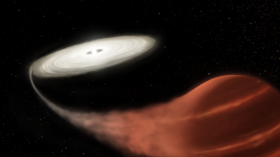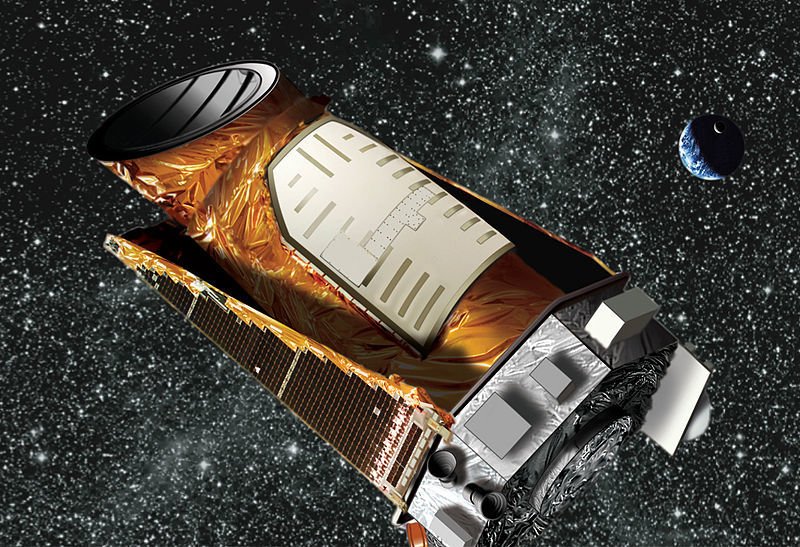Ancient ‘Vampire’ star spied sucking the life out of celestial giant by NASA’s planet-hunting probe

NASA’s planet-hunting Kepler spacecraft has witnessed the remains of an ancient star thirstily draining material from its giant celestial companion, in a remarkable interaction known as a super-outburst.
This star system consists of a ‘White Dwarf’ star with a 'Brown Dwarf’ companion that’s roughly 10 percent the size of its rapacious neighbour. White Dwarfs are what stars become when they have exhausted their nuclear fuel, while Brown Dwarfs are huge celestial bodies that are larger than the largest planets but smaller than the smallest stars.
The extraordinary event was identified by researchers mining data from the retired Kepler probe, which has scanned space in search of Earth-sized planets orbiting stars.
Also on rt.com One of the brightest explosions ever seen was actually a giant star EATING its neighbor – studyThe unfortunate Brown Dwarf circles the White Dwarf star every 83 minutes at a distance of only 250,000 miles (400,000km) – equivalent to the average distance between the Earth and Moon.
The exhausted star’s powerful gravity rips matter from the brown dwarf, sucking away its essence like a vampire. The stripped material then swirls toward the white dwarf, creating a large disk around the ancient stellar remnant.
The interaction saw the star brightened by a factor of 1,600 over less than a day, before slowly fading.
Kepler was the only instrument capable of witnessing the super-outburst, because the star system was too close to the Sun from Earth’s perspective. The probe was able to catch the stunning event because of its rapid cadence of observations, which were recorded every 30 minutes.

The super-outburst was discovered hidden in Kepler’s archive by a team of scientists. “In a sense, we discovered this system accidentally,” lead researcher Ryan Ridden-Harper explained. “We weren’t specifically looking for a super-outburst. We were looking for any sort of transient.”
The detection of the super-outburst has raised hopes for the possibility of discovering other rare events hidden in Kepler’s archives. The team is now set to pore over the probe’s data to see what else it witnessed during its decade scanning space.
Also on rt.com Inferno planets & the Goldilocks zone: Here are Kepler’s most awesome discoveries (PHOTOS, VIDEO)Like this story? Share it with a friend!















